Islas! Islas!*
* Islands! Islands!
For the weekend of my 60th birthday (March 22), I decided to take a little tourist jaunt to the Uros and Amantani Islands via boat. You can purchase a tour from one of many agencies in Puno, but Juan, my host at Posada Santa Barbara, told me that if I go to the pier in Puno, I can pay the captain directly for the boat trip. Then, when I reach the island, if I pay my host family directly for my stay, they will receive more of the proceeds and don’t have to wait for the agency to send the money. For the tourist, it costs about the same. AND I could choose to stay more than one night, which is what I wanted to do. On an overnight tour, you barely get there about 1:00 in the afternoon and then have to leave at 7:30 the next morning! As it turned out, I was really glad that I decided to stay longer, and two nights was just enough.
Most of the people on the boat book through an agency. But the guide is provided by the boat, not the agency, so those of us who are travelling independently are welcome to follow the guide, who gladly repeats everything in English.
The boat stops at the Uros (floating) Islands, which is a pretty touristy stop, but also interesting. Only a few people still live as they always have on these unique artificial islands.
If you look at a Google map of the Uros in satellite mode and close up, you will see that around the edge of Lake Titicaca is a lot of green stuff. Before I came here, when I first saw the green stuff, I thought that it was algae and was pretty disappointed. But, it turns out that huge areas of reeds line the lake.
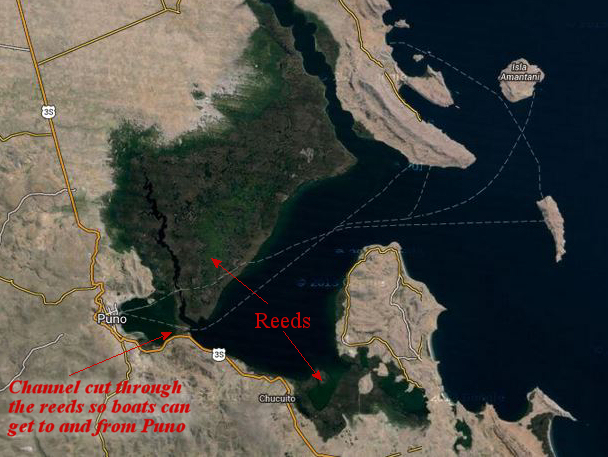
These reeds are very useful for all the inhabitants in and around the lake. They are great for thatched roofs and even making cottages. You see them drying or stacked and for sale all along the shoreline.
At some time in their history the Uros people discovered that they could cut blocks of the boggy part that the reeds grow in, tie the blocks together, and float them out into the lake. Then they stack about three feet of fresh reeds on top of the blocks. They use stakes to anchor the whole contraption to the bottom of the lake. (I have no idea who volunteers to dive down and pound the stakes into the bottom of that cold lake, but when we visited, the children were happily swimming!)
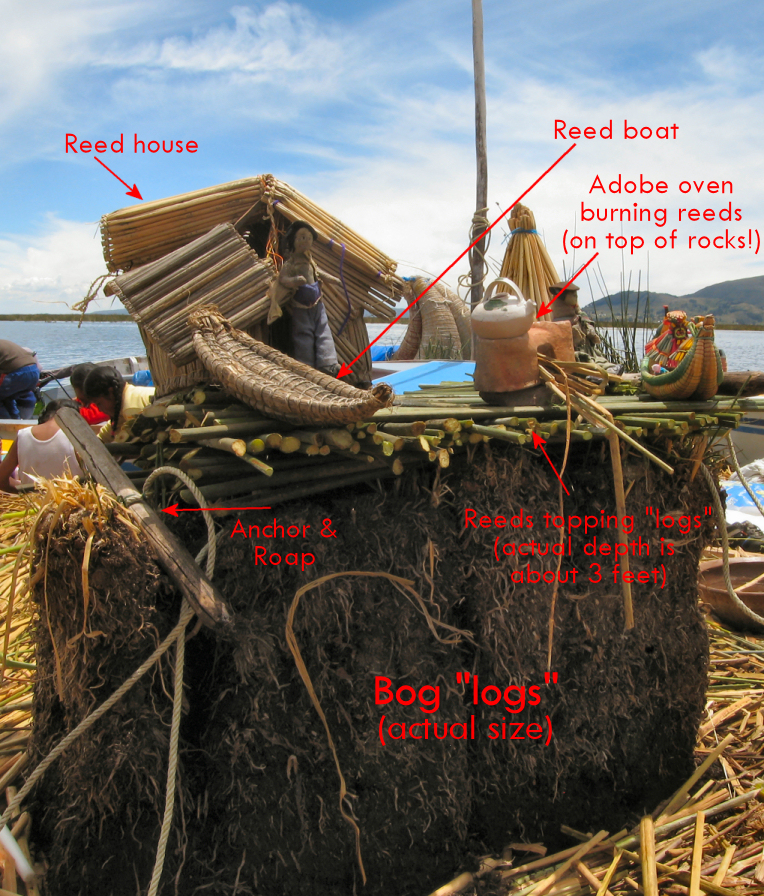
On top these rafts, they build their houses of (what else?) reeds. They obviously have to be very careful of fire!
Reeds are also used for making their uniquely-shaped boats and the bottom part of the reeds is tender and quite good to eat. For 10 soles, they will take you on a little trip in one of their boats, which are propelled by a boatman with a pole. The water was very still and the ride was very relaxing and tranquil.
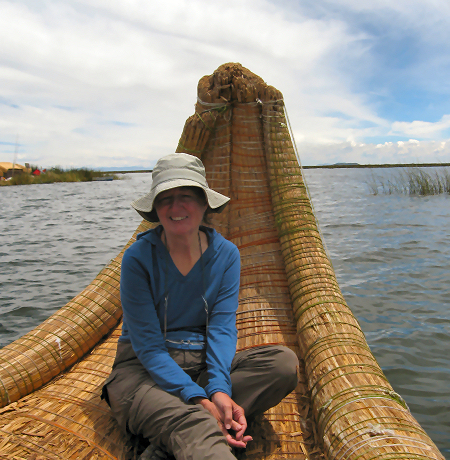
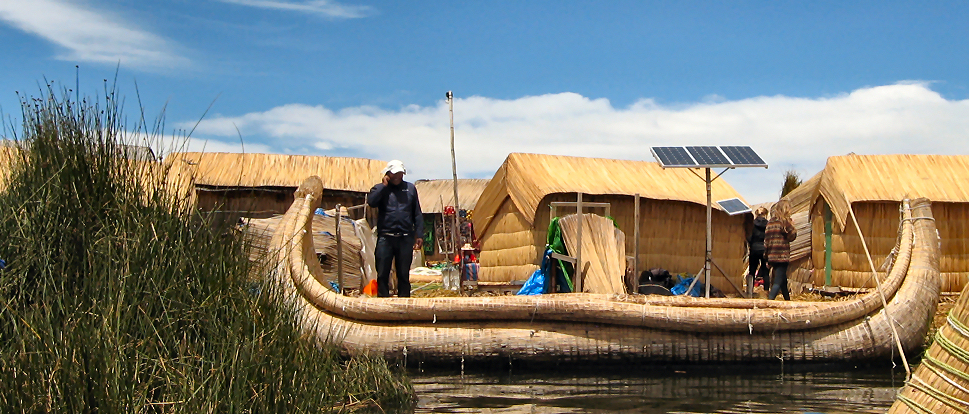
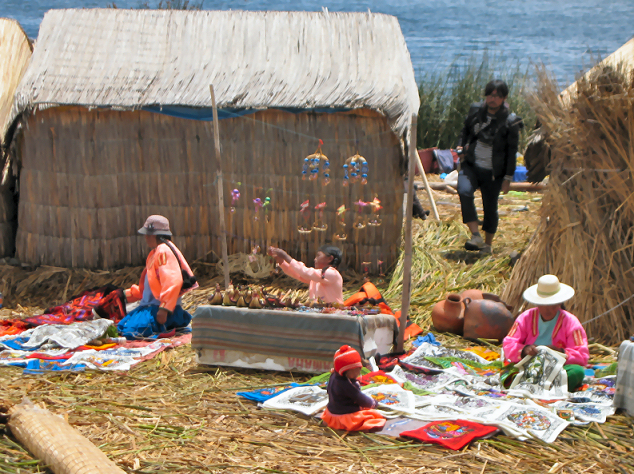
I later learned that this is kind of a “living history” museum. Very few of the Uros people still live in this fashion, and those that do usually do not invite tourists to their communities. Today’s Uros use motor boats and often have solar panels for electricity and even satellite dishes!
Then it was on to Isla Amantani (about another hour and a half—these boats travel pretty slowly). When we arrived the guide assigned us to a homestay family. The families provide lodging and meals on a rotational basis so all the families offering accommodation get a fair shake at hosting tourists. I, along with two young couples, was assigned to Mirasol and Artemio’s home. They live right on the central plaza and even have a little tienda (shop) that opens to the plaza.
The walk up to their home was straight uphill almost—or at least it seemed that way to this almost-60-year-old. It is customary to bring a gift of fruit to your host family since they cannot grow any fruit on the island. I kind of went out of control shopping at the mercado near the pier. I love shopping in the market! So my bag of fruit consisted of a pineapple, 2 avocados, 2 cucumbers, a mango, some apples, bananas, and a few more things. Well, the upshot of that was that I had to carry it along with my day pack UP THAT HILL. When I lagged behind, huffing and puffing, (Remember the altitude?) one of the young people gladly offered to carry my bag of fruit. AND I STILL LAGGED BEHIND! Luckily, no one seemed to care and we all got to the home eventually.
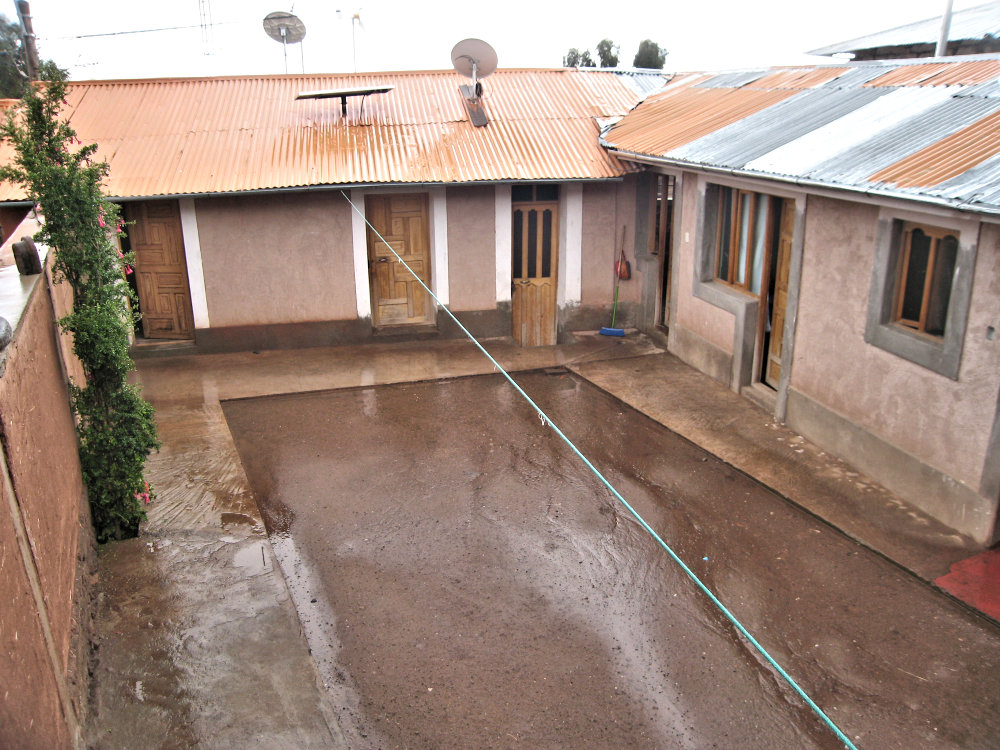
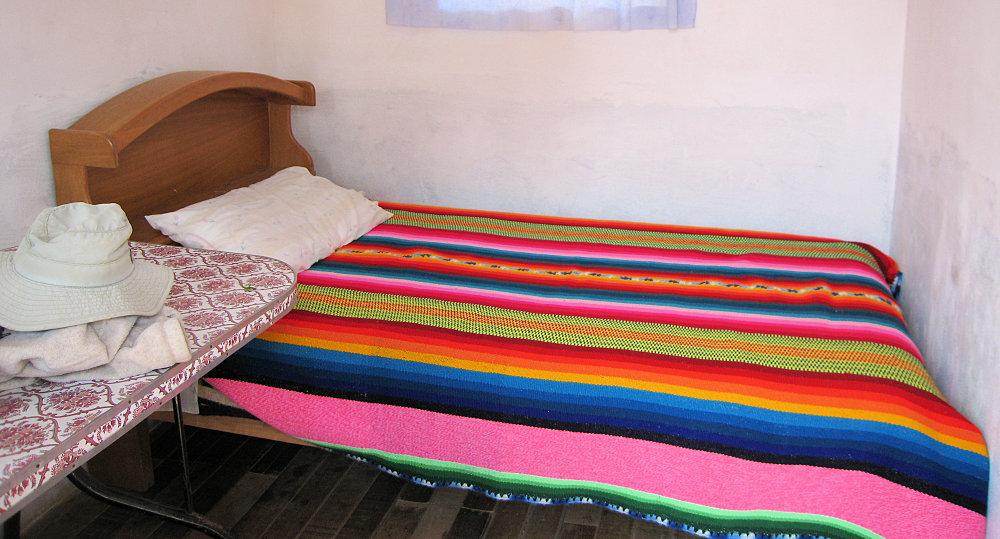
Mirasol prepared us a hearty lunch of quinoa soup, fried cheese, boiled potatoes, and oca (a root vegetable that is shaped like a bumpy carrot and tastes like a combination of potato and carrot—just a little sweet.) I really like oca, and the cheese is good mashed with the potatoes.
After lunch, the two other couples went on walks, but Mirasol and her 13-year-old daughter, Meliza, brought out their knitted, woven, and crocheted work. So, of course, I stayed behind. I purchased a cute decoration from Meliza for my braid that Mirasol wove into my hair. Most all the Aymara and Quechua women here wear decorations dangling from their braids. Now I had one for myself.
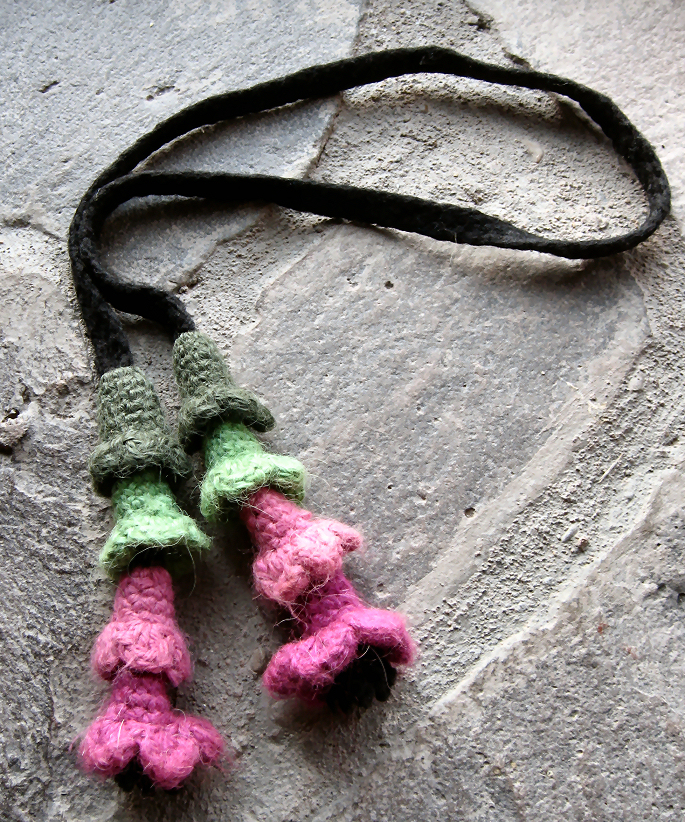
I brought in my knitting and spinning and they got to try my spindles out. Meliza was learning to spin, so she was most comfortable with the Andean spindle. Younger brother Yheison enjoyed spinning the Turkish spindle Ben like a top on the floor. Meliza and I knitted and crocheted together for most of the afternoon.
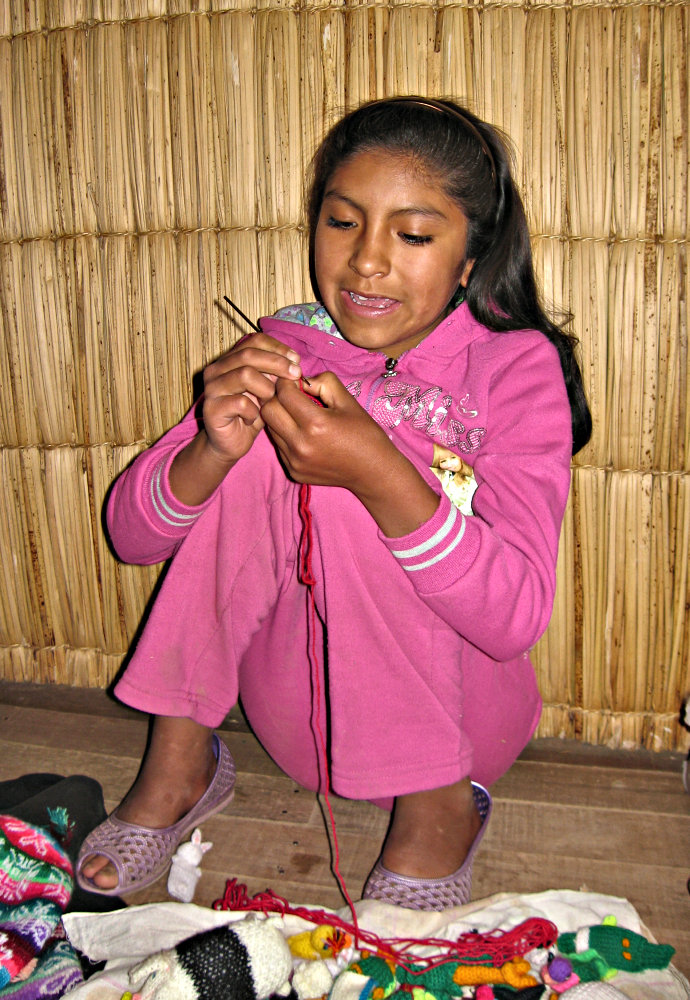
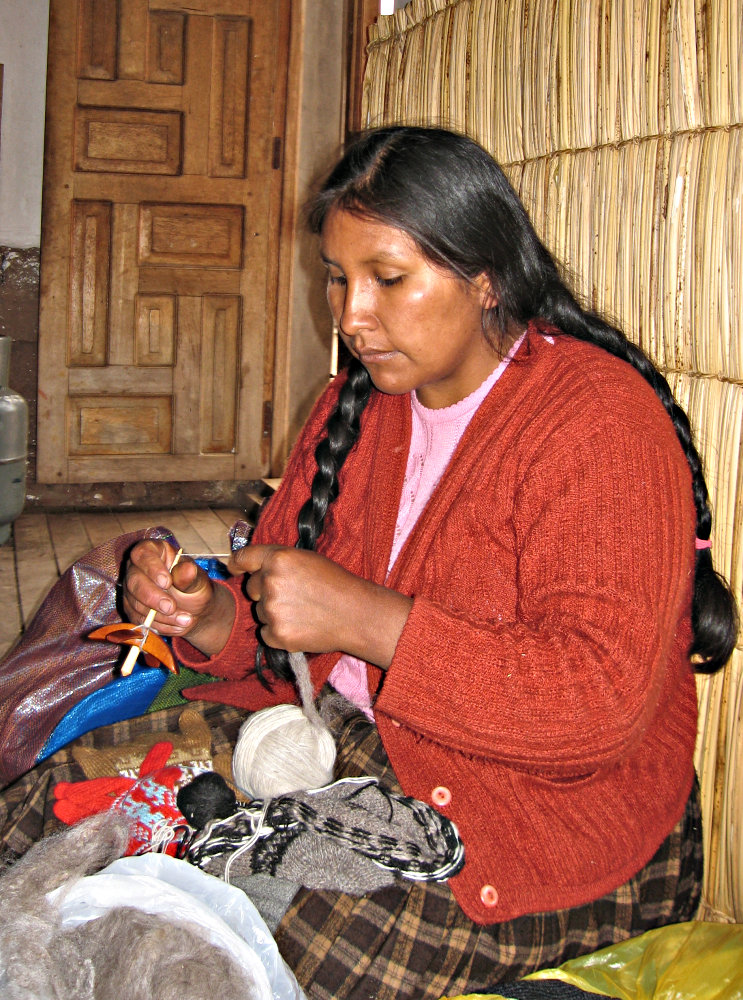
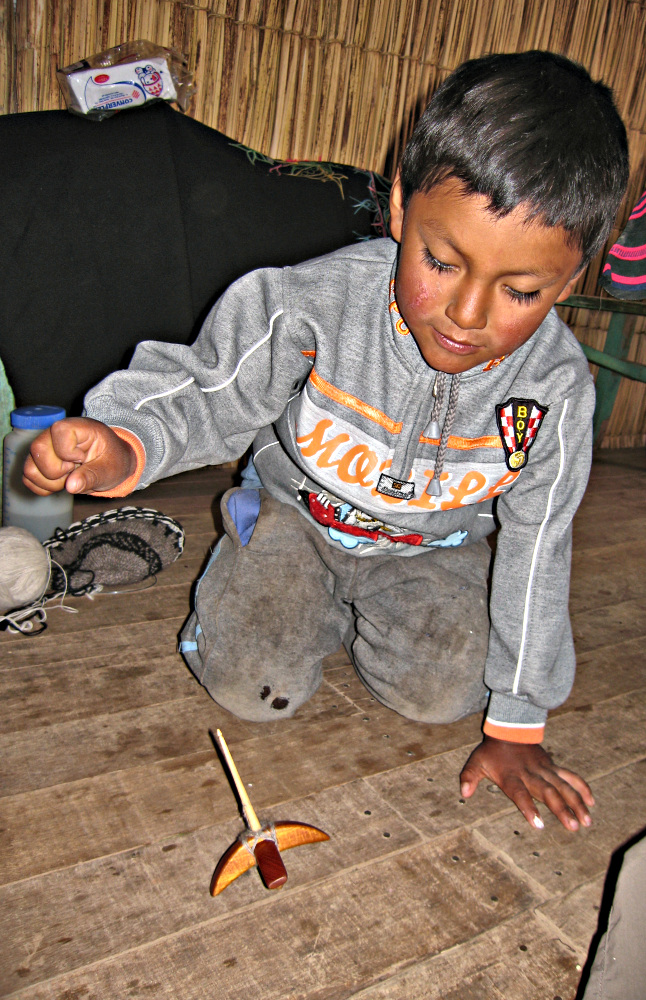
That evening, the two young couples returned and we were served soup followed by spaghetti. We were all pretty tired and cold and went to bed by 8:00. In these high Andean villages, the warmest place after about 7:00 is bed.
Other Blog Posts You May Find Interesting
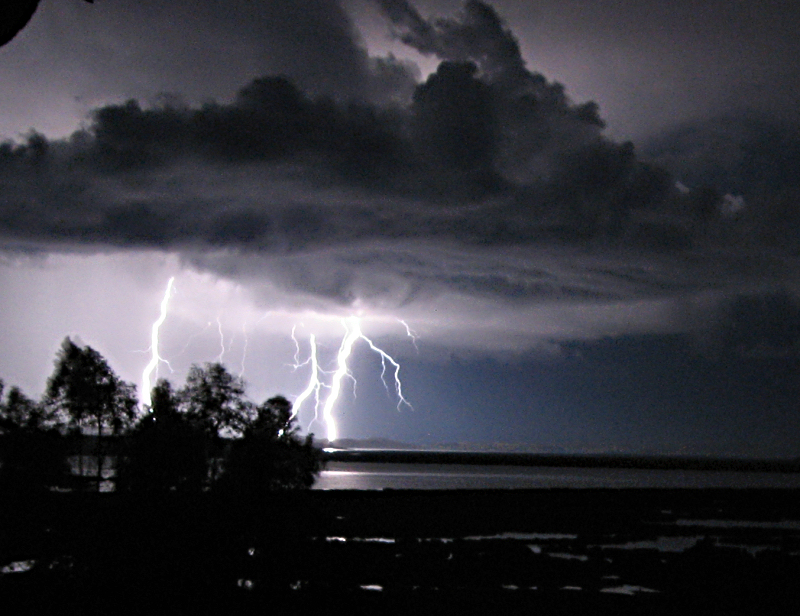
Trueno Y Relámpago! Thunder and Lightning
Tonight, I took the opportunity to point my camera out my bedroom window and try my hand for the first time to capture some of Mother Nature’s power:
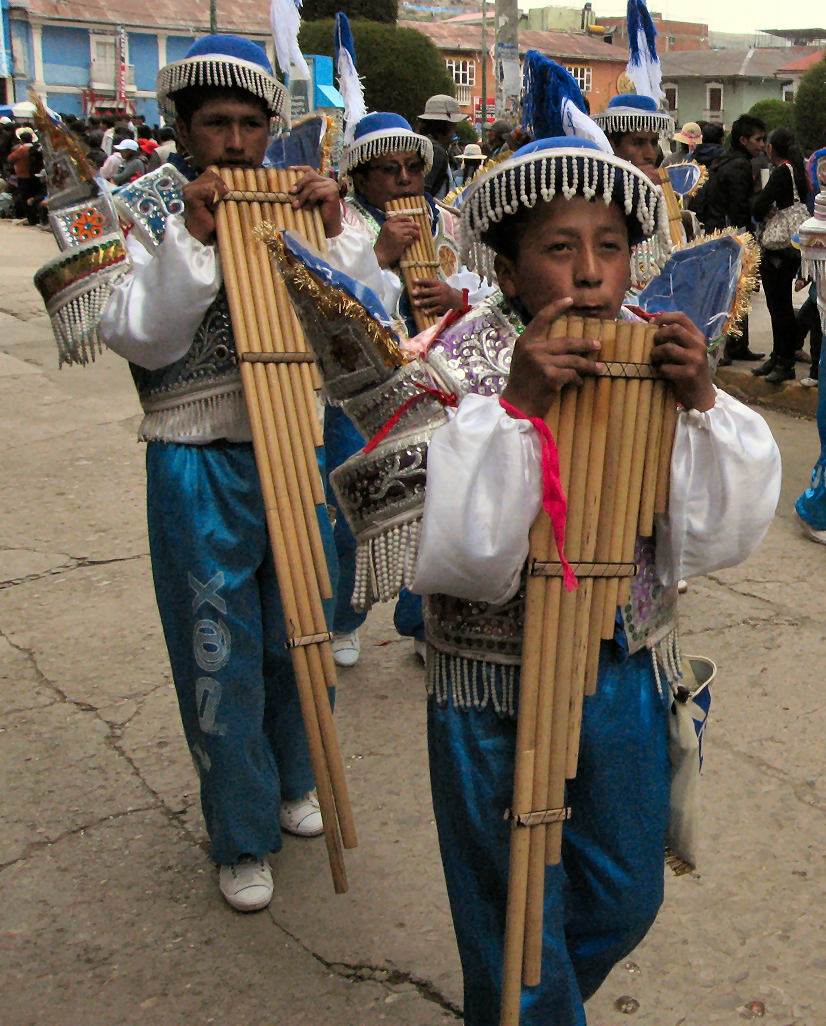
Revisiting the Festival of Candelaria on the Shores of Lake Titicaca
The Festival takes on a new meaning in Puno, where the Virgin of Candelaria is the patron saint and the celebration goes on for two weeks! Dancing and music go on every day and last late into the night.
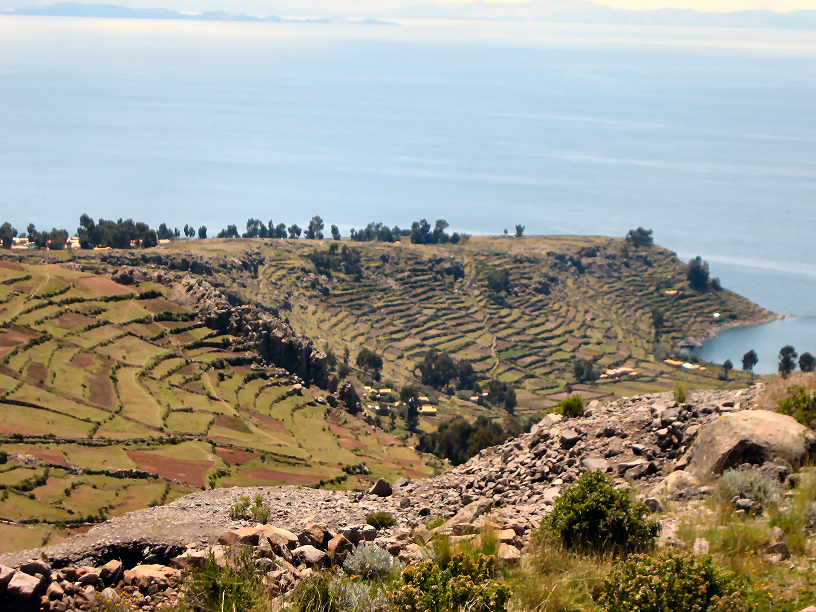
Celebracion de 60 Compleanos en Isla Amantani
The tienda faces the plaza and there were some young men outside on the steps. Meliza and I moved outside to sit near them. I asked if they could spin. Freddie, sitting next to me smiled broadly and said yes, and he started using the little Turkish spindle while his friend tried out the one that Ben made me.